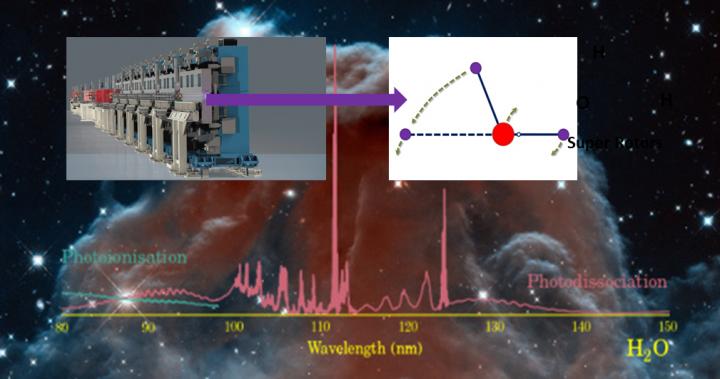
Credit: YUAN Kaijun
Scientists at the Dalian Institute of Chemical Physics of the Chinese Academy of Sciences recently revealed hydroxyl super rotors from water photochemistry by using the Dalian Coherent Light Source (DCLS). The researchers, under the direction of Prof. YUAN Kaijun and Prof. YANG Xueming, published their findings in Nature Communications.
Hydroxyl (OH) is a key radical in interstellar oxygen chemistry due to its capacity to react with most gases in the interstellar medium. OH radicals with extraordinarily high rotational levels of excitation were observed by astronomers in emission from HH 211(one of the youngest known stellar outflows) and the T Tauri star DG Tau. It is very unlikely such rotationally “hot” OH radicals would be formed from any chemical reactions, but they could originate from short wavelength photolysis of H2O. In the present work, the production mechanism of rotationally hot OH radicals was identified by systematic studies of vacuum ultraviolet (VUV) water photochemistry.
“The advent of the intense, pulsed VUV free electron laser at the DCLS opens the way for state-of-the-art molecular photodissociation dynamics studies at any user-selected VUV wavelength,” said YUAN.
“Highly rotationally excited OH radicals, so-called ‘super rotors’ existing above the bond dissociation energy, were observed from the photodissociation of water at 115.2 nm. Such peculiar dissociation dynamics were only observed at around 115.2 nm, which reveals interesting dissociation mechanisms,” YUAN added.
The free electron laser facility provides a chance to investigate the VUV photochemistry of small molecules. The dissociation processes of these molecules are ubiquitous in interstellar space and should be recognized in appropriate interstellar chemistry models.
###
The research work was supported by the Strategic Priority Research Program of the Chinese Academy of Sciences, the Chemical Dynamics Research Center, and the National Natural Science Foundation of China.
Media Contact
WANG Yongjin
[email protected]
Related Journal Article
http://dx.




